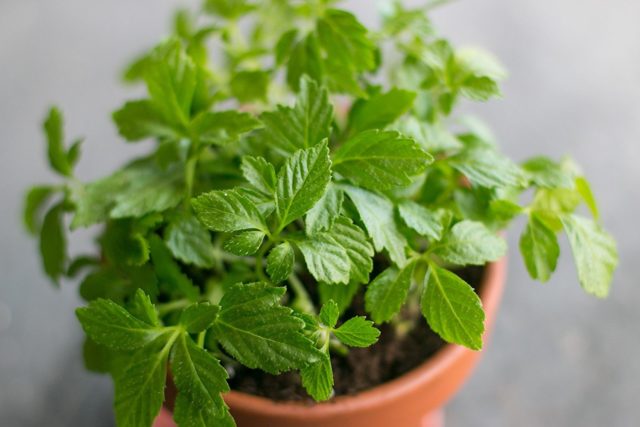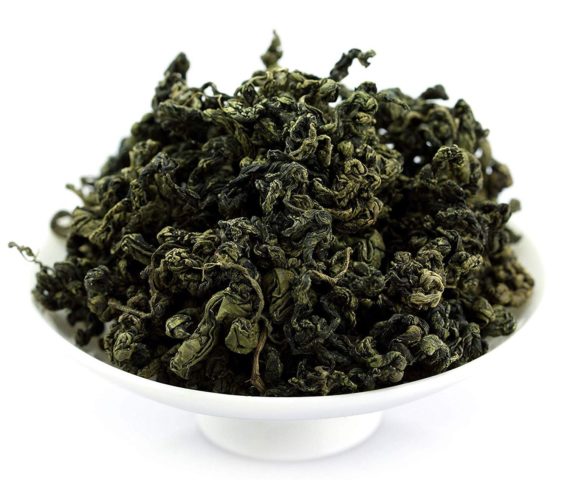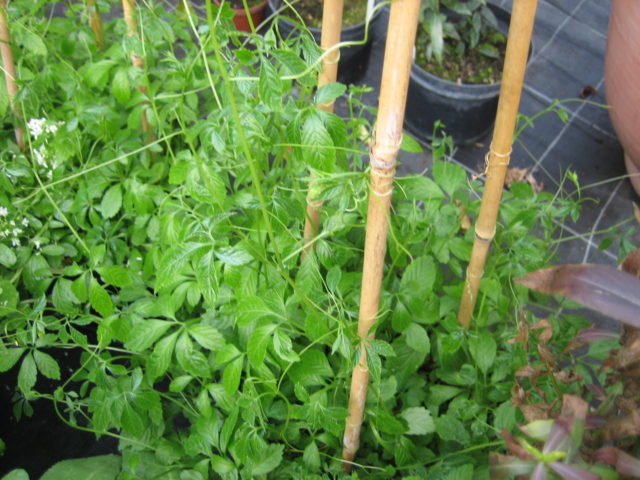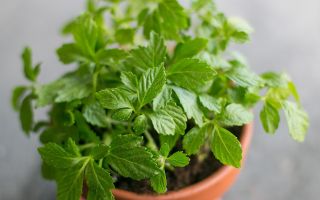Content
Useful properties and contraindications of gynostemma five-leafed raises many questions for tea drink lovers. In China, the plant is considered a real symbol of immortality. It contains beneficial substances that inhibit the aging process. The undoubted advantages of gynostemma include a pleasant sweet taste.
Description of gynostemma five-leafed
Gynostemma is a herb belonging to the Pumpkin family. It grows in China, Japan, the Himalayas and New Guinea. The second name of the plant is jiaogulan, it has creeping roots and thin stems covered with peculiar tendrils. In the process of growth, the five-leaf gynostemma wraps around the surrounding objects, rushing upward. Plants can grow up to 8 m in height.
Jiaogulan is a dioecious plant. During the flowering period, it is covered with small inflorescences of white or green flowers. Gynostemma leaves turn deep green in summer and turn red in autumn.

Composition of gynostemma five-leafed
Due to the mass of useful properties, the plant began to be used in alternative medicine. A multifunctional drink with a pleasant taste is prepared from it. Jiaogulan is a natural adaptogen. Therefore, it is often used to adapt the body to stressful conditions.
The five-leaf gynostemma contains the following components:
- saponins;
- amino acids;
- calcium;
- iron;
- vitamins;
- phosphorus;
- selenium;
- zinc;
- polysaccharides;
- potassium.
In terms of saponin content, gynostemma five-leafed significantly outperforms ginseng. Due to this, the plant effectively increases physical endurance and tone the body. The rich content of vitamins in the composition helps prevent colds and viral diseases. Amino acids provide better protein absorption.
Useful properties of gynostemma five-leafed
Five-leaf gynostemma is widely used in Chinese alternative medicine. It is positioned as a general tonic, but at the same time copes with viral and infectious diseases. Research shows that five-leaf gynostemma has been shown to work well in the treatment of depressive disorders and sexual dysfunction. The beneficial properties of the medicinal herb include the following:
- relaxing effect on the body;
- slowing down the aging process;
- anti-inflammatory action;
- lowering blood sugar levels;
- normalization of metabolism;
- increased sexual desire;
- increasing resistance to stress;
- normalization of digestion;
- restoration of liver cells;
- aid in weight loss;
- strengthening immunity.
Due to its sweet taste, five-leafed gynostemma is often used during weight loss. It does not affect the figure in any way, but it reduces cravings for sweets. In addition, it restores the water-salt balance and starts metabolic processes.
Due to its pronounced tonic effect, five-leaf gynostemma is often compared to ginseng. It quickly relieves drowsiness and replenishes energy in the body. Therefore, tea with its content is considered an excellent alternative to coffee and energy drinks.

How to make gynostemma tea
Most often, gynostemma is consumed in the form of tea. It can be a great alternative to the usual drinks. The tea has a tart-sweet taste, which eliminates the need to add sugar to it. Experts recommend drinking it only in the first half of the day to avoid trouble falling asleep.
Among the useful properties of tea from gynostemma, the treatment of gastrointestinal diseases is distinguished. The drink is also indicated for taking people suffering from drops in blood pressure. It effectively lowers cholesterol and helps cope with insomnia.
For brewing tea, use the leafy part of the plant. To get the most out of your drink, certain rules must be followed. It is best to use a thermos as a container. For 1 liter of water, 3-5 tsp is provided. mixtures. The brewing process is carried out under the lid for 2-3 minutes. The number of spills can be up to 6 times.
Contraindications and side effects
Despite its many beneficial properties, five-leaf gynostemma should be used with caution. It is especially important to familiarize yourself with the possibility of combining the drink with medicinal preparations and other herbaceous plants. The absolute contraindications include the following:
- hypertension;
- individual intolerance;
- pregnancy;
- kidney disease;
- lactation period.
Gynostemma five-leaf tea has a pronounced tonic effect. If consumed in the afternoon, you may have trouble falling asleep. With individual intolerance, taking a drink can provoke skin rashes, accompanied by itching.
Growing gynostemma outdoors
The five-leaf gynostemma can be grown in some warm regions of Russia. The seeds are purchased in specialized stores. First, they are soaked in warm water for a day. Then they are transferred into pots with prepared soil. It is important to take care of filling them with compost with sand or humus in advance. You can also buy ready-made seedling mixture in specialized stores.
Before emergence, the pots are covered with foil. During this period, the room should maintain a temperature of 20-22 ° C. After the shoots appear, the film should be disposed of. The soil in the pot must be constantly kept moist.

For good shoots, the light must be diffused. It is advisable to avoid exposure to direct sunlight. The five-leaf gynostemma does not experience an urgent need for regular feeding. In open ground, the seedlings are moved after warming up to 14-15 ° C.
For planting in open ground, choose a dimly lit place. It is equally important to take care of the presence of support, since as the gynostemma grows, it forms long lashes. The soil in the open field should not be heavy. Plant care is not at all difficult. It involves getting rid of weeds and regular watering. In this case, you need to ensure that there is no stagnation of liquid in the soil.
A year after planting, it is permissible to add 30 g of fertilizer to the ground for each bush.In a dry period, the leaf part must be sprayed with pre-settled water. In summer, it is important to prune the plant to further dry the leaves.
The five-leaf gynostemma is able to endure wintering. At temperatures from -15 ° C to -18 ° C, it hides under a thick layer of snow. In its absence, the ground part dies off completely, and in the spring it grows again. In some cases, the five-leafed gynostemma is transplanted into pots filled with soil in the fall and taken indoors. In the spring, the plant is transferred to the ground again.
Collection and storage of gynostemma five-leafed
Collecting five-leaf gynostemma can be done throughout the summer. For making tea, use the leafy part. It is carefully cut with a sharp knife and placed in a deep container. Dry medicinal herbs should be in a well-ventilated area. It is laid out in a thin layer on newspapers or film. The drying process takes 2-3 weeks. During this period, it is necessary to constantly stir the leaves for uniform evaporation of moisture. Drying is complete when the leaves become brittle. They are put in a craft bag or glass jar with a lid. The container is placed in a dark place, protected from moisture. The shelf life of medicinal tea is 1 year.
Conclusion
Useful properties and contraindications of gynostemma five-leafed must be studied before taking tea based on it. The drink can be harmful to health, if contraindications are not taken into account. When all the recommendations are followed, the drink will help strengthen the immune system and replenish the supply of nutrients in the body.

